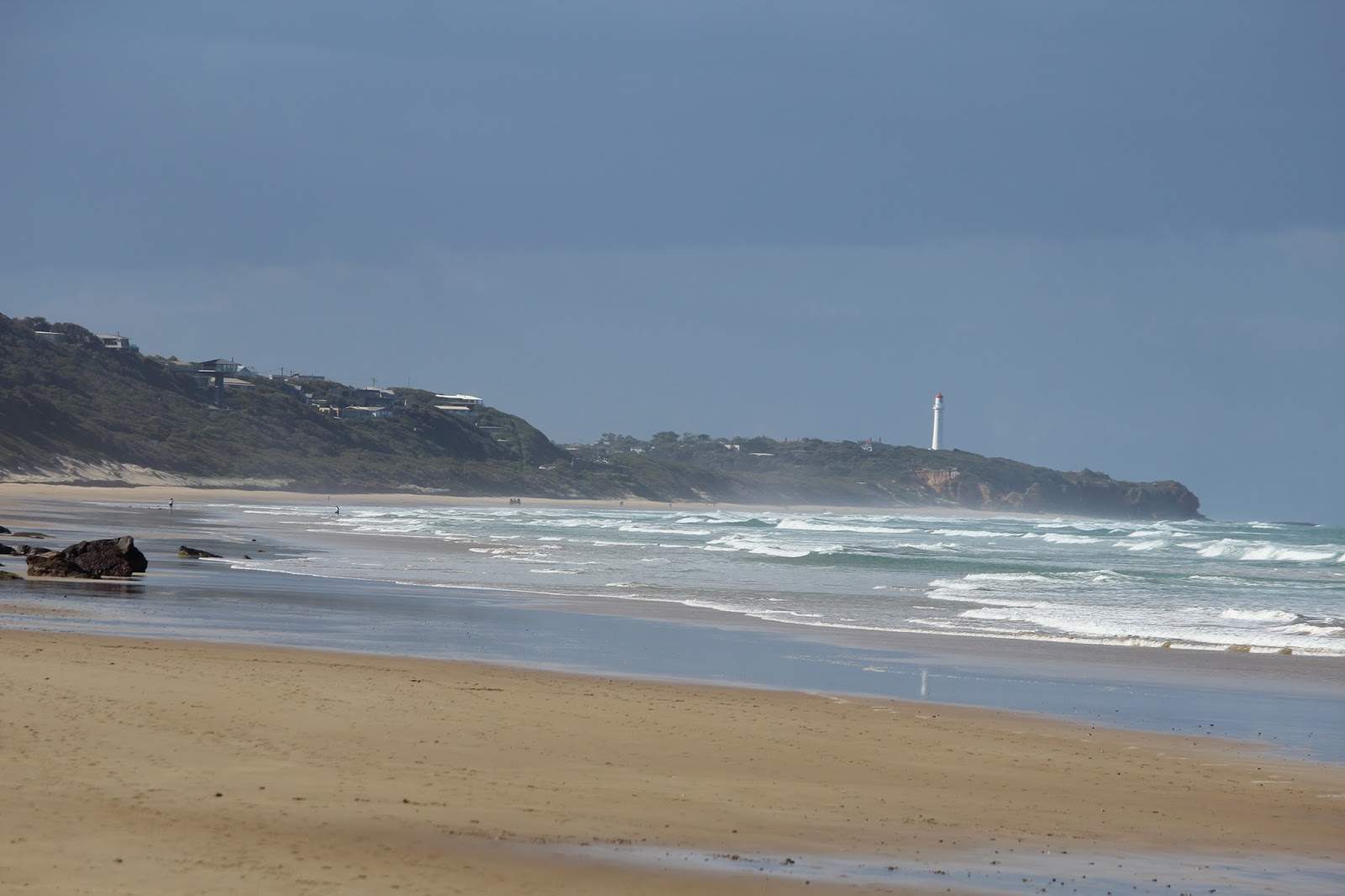Most of today was spent traveling further inland to begin our farm visits. Many of us were ready to head out to the country and leave the large cities. This morning, we packed up our bus, left Melbourne, and took the 45 minute drive to Geelong, Victoria. We were able to see some countryside on our way, but Melbourne is growing so rapidly, that suburbs just keep popping up.
Today, Geelong is known as an industrial town, but it first
began as a sheep producing area. This area originally started out with more
sheep than people. Geelong is home to the National Wool Museum, which we
stopped and toured. Here we learned things from growing sheep, to washing and
processing the wool, to the finished products we know today. At the museum we
saw a demonstration of a 110-year-old functioning carpet loom.
 |
|
National Wool Museum in Geelong learning about wool
production in Australia.
|
From Geelong, we had about an hour and a half drive to
Lorne, along the Great Ocean Road. The road wound along the edges of the
mountains and the view of the Bass Strait/Southern Ocean from the road was
beautiful. The Great Ocean Road is 243 kilometers long and was constructed over
13 years. The road, which is a War Memorial, was built by soldiers using only
picks, axes, shovels, and wheelbarrows.
 |
|
View from the Great Ocean Road of the Bass Strait/Southern
Ocean.
|
We stopped for lunch in Lorne at the Great Pacific Bistro.
We all enjoyed our meals and the gorgeous water views offered here. After a
delicious meal the group had a few moments to explore and experience the
gorgeous Southern Ocean. We then continued our 3 hour drive to a beef cattle
farm. We had finally gotten into the agricultural land of Australia, which we
were all happy to see!
 |
|
Great Pacific Bistro in Lorne, Victoria where lunch was
served.
|
The next stop was at John and Sue Sambell’s organic beef
farm. This farm was started in 1971 as a conventional beef operation. They
recently became organic to meet growing consumer demands. Here they own 700
head of Angus cattle on 4,000 acres of land. Their farm was the first in the
area to introduce American genetics into their beef herd. Due to drought in
Australia there is a water shortage. As a solution they utilize wind mills on
the farm’s to pump water from some of the many wells on the property. John is
one of the few people of the area to bale rye grass and oat silage. This is
something that many of us have never seen before. We also got to see their
cattle working facilities, which included a separate alleyway for working
calves. In this facility, they showed us their cattle EID management system. In
Australia, it is required to have each animal tagged with an EID tag. Their
facility makes it simple for the EID reader to scan the tag of each animal that
passes through. They also showed us their organic pig manure compost pile that
they use to fertilize their paddocks.
 |
|
One of many organic Angus cows on John and Sue Sambell’s
farm.
|
 |
|
The beautiful sunset at the Sambell farm.
|
 |
|
Eating time for the cattle on the Sambell farm.
|
 |
|
Students experiencing firsthand the smell of the rye grass
and oat silage bales.
|
The last stop of the night was a get together at the Gwen
and Edna Pavilion. Here we were given the opportunity to meet and talk with
local farmers. Of this group of local farmers we also were given the
opportunity to talk to a few individuals from Young Farmers of Australia. Along
with meeting the locals, we also ate an authentic Australian meal, which was
delicious! A great time was had by all, and many new things were exchanged
between all individuals.
 |
|
SDSU Students with Young Farmers of Australia at a local
farm gathering.
|
Paige, Angel, & Brian
Thanks Brian and team for a great report! We read all of them back here in MN! What a neat life experience! You all look good in the photos! Thanks for sharing :)
ReplyDelete